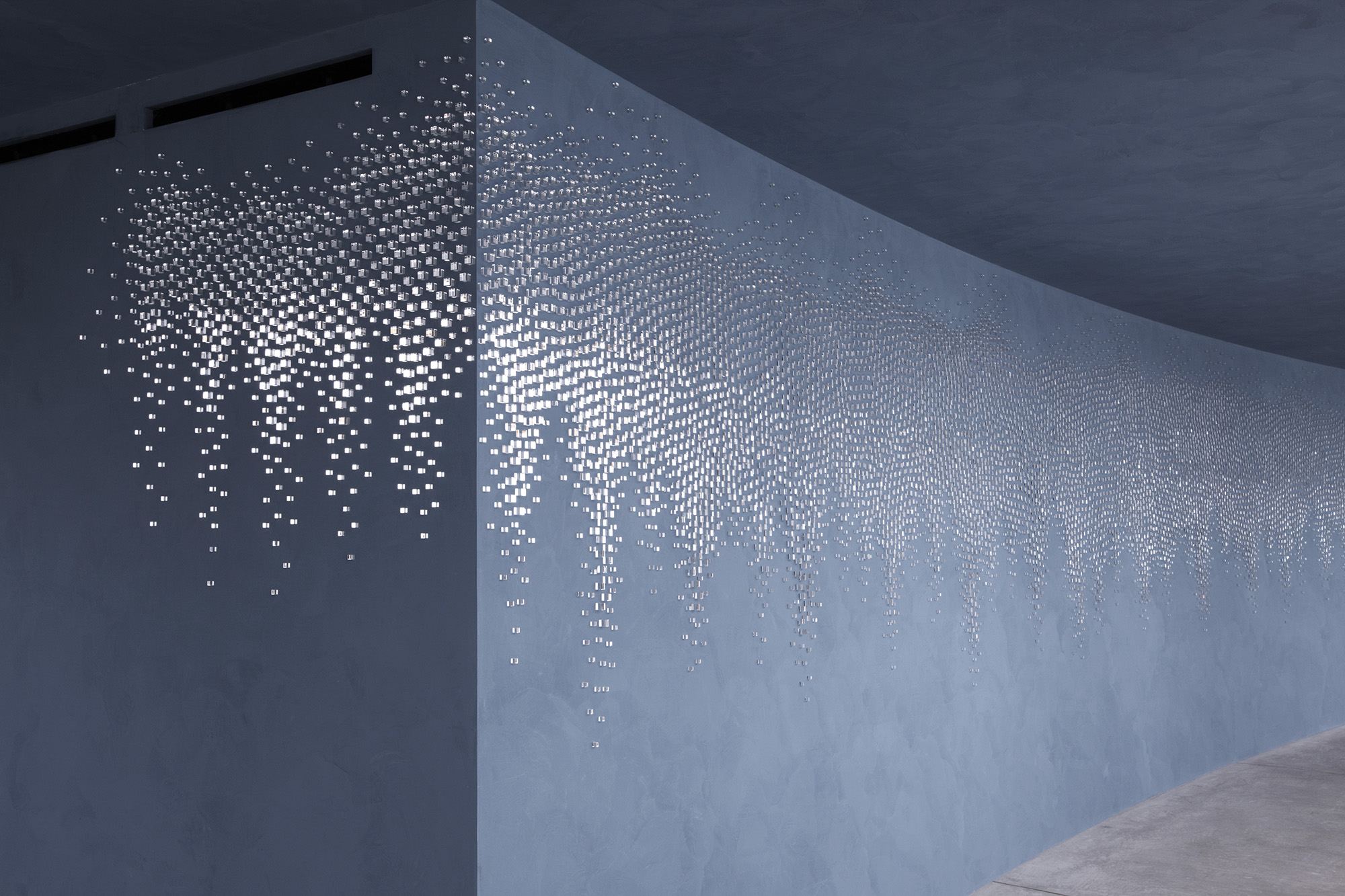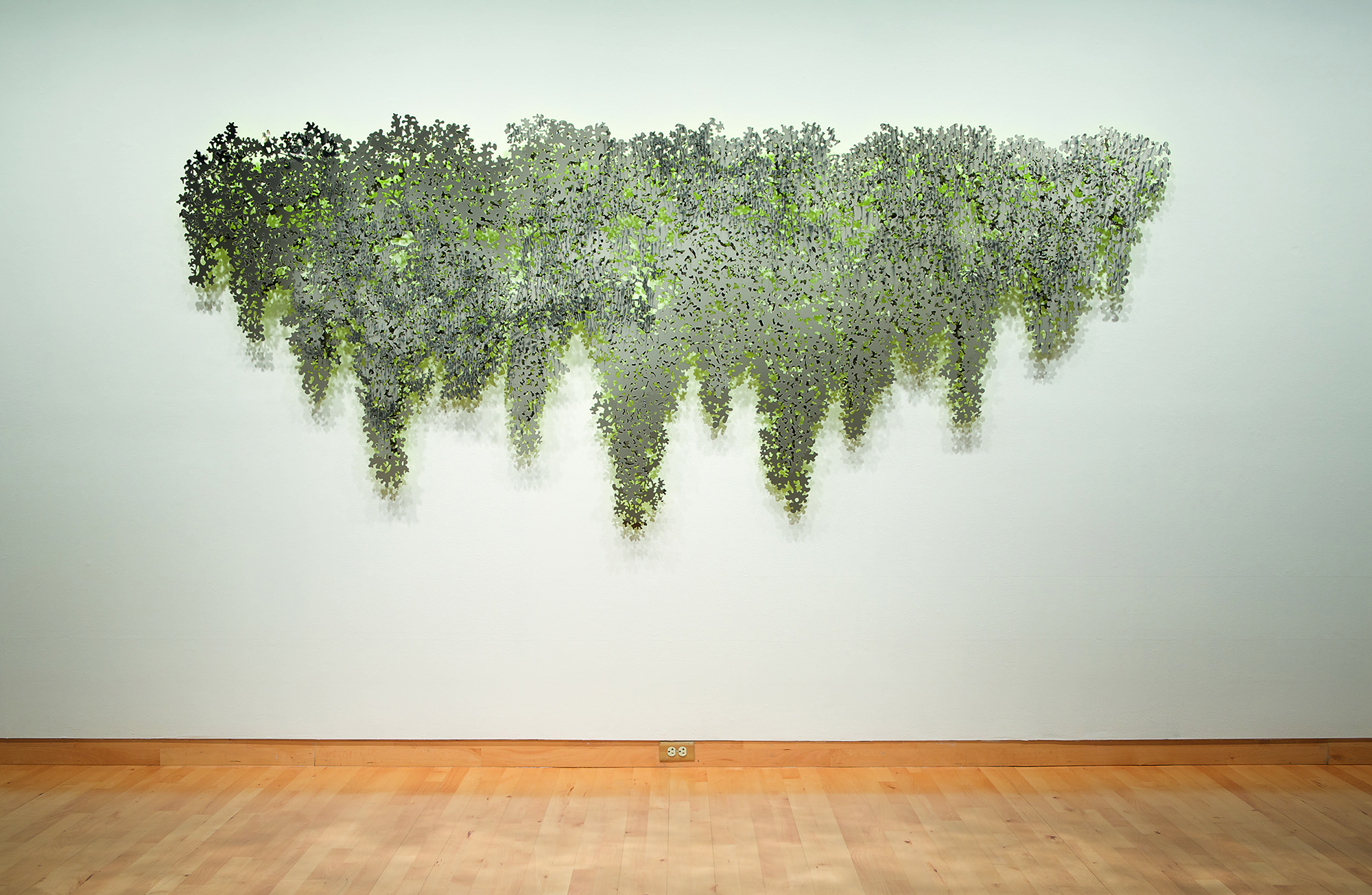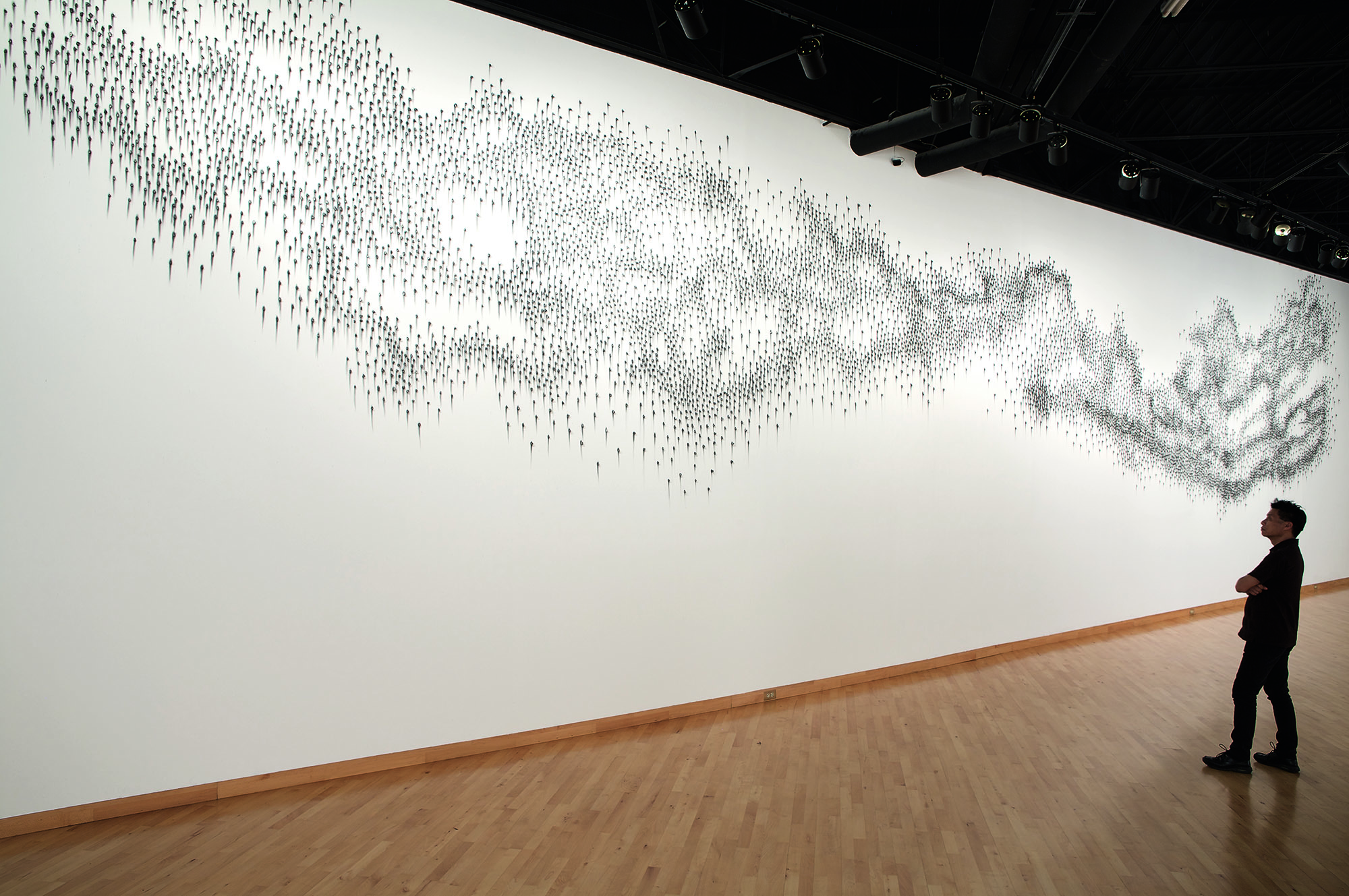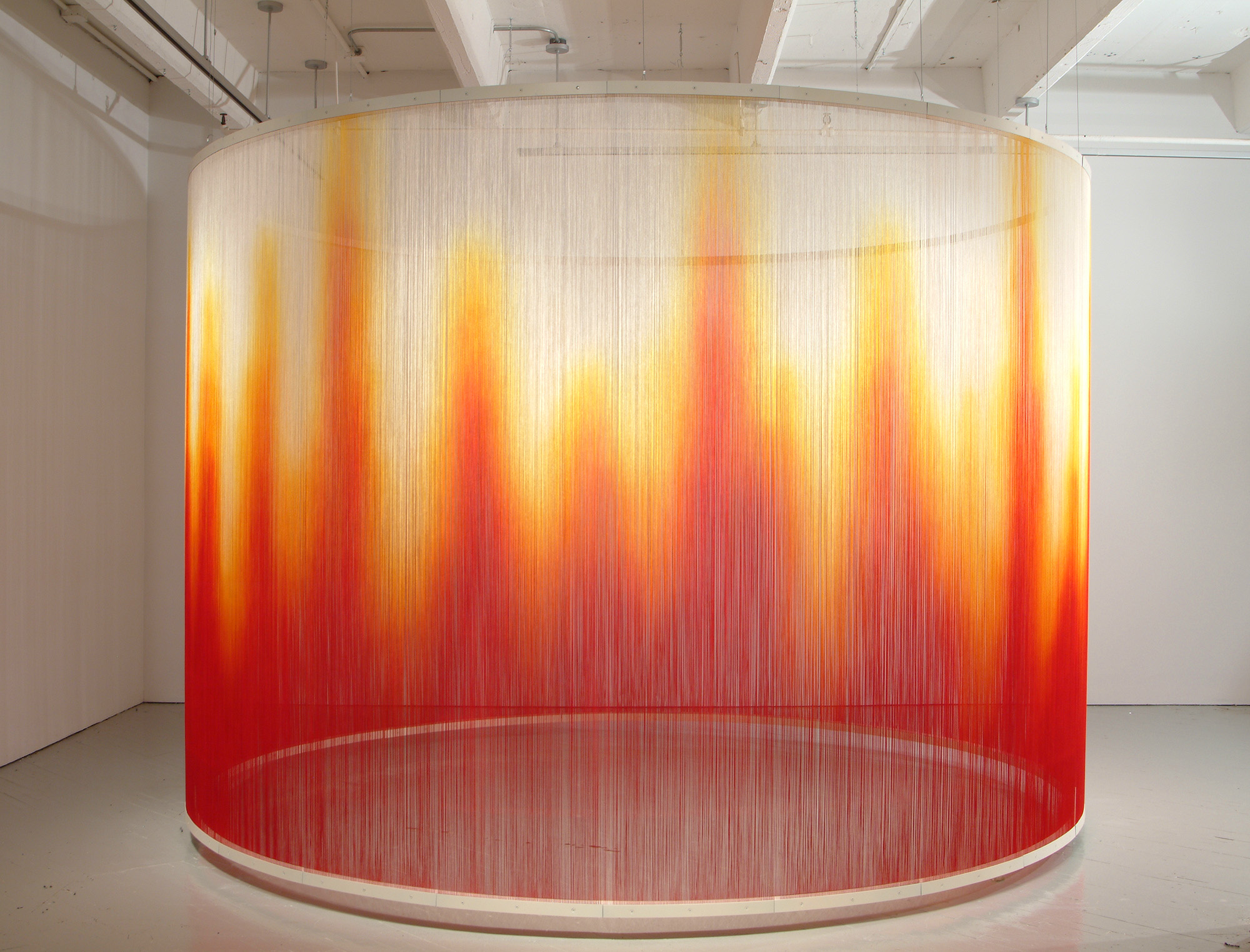Teresita Fernandez / interview




[Kwon] You’ve explored graphite as a medium of your work. Please tell me how you became interested in this material; and how your choice and application of it show an evolution of materials in your work.
[Fernandez] The work I’m doing uses graphite in many ways — from the drawn line, to precision-machined slabs, to its natural state. I became interested in the history of the drawn landscape. My reference is to a specific site: the valley of Borrowdale, in the Lake District in Cumbria, England where graphite was first discovered in the 1500's. I became fascinated with the idea of the actual landscape as physical drawing, the whole of Borrowdale sitting on a solid bed of graphite. I was looking at it as a kind of land art, an enormous drawing in the landscape.
[Kwon] For the Epic installation, how did you begin developing your forms? Your piece reminded me of the artists whose works are inspired by traditional East-Asian black ink paintings.
[Fernandez] “Epic,” looks like a cloud formation or meteor shower: the image literally materializes itself. I construct an image by dissolving these many points of reference, like I’m spreading it or stretching it out in order to see it in a new way. It’s a distortion with a kind of Mannerist sensibility, the image of a natural phenomenon is disfigured, diffused, evaporated.
[Kwon] Are you inspired by certain architecture or landscape? What does quality of it influence your studio processes?
[Fernandez] I’ve always been inspired by architecture in the sense that it is the ultimate form of immersive, constructed experience. My earlier work especially is directly informed by this sense of moving through rooms and between these thresholds of interior and landscape. But the most important parallel for me between landscape, architecture and sculpture has less to do with what something looks like or its sheer size and more to do with an ambulatory viewer. The work is always understood by a viewer on the move.
[Kwon] I’m wondering about the process of commission work, like Stacked Waters and Hothouse. What are the pros and cons of working with design/construction team for your installation?
[Fernandez] I often do large-scale commissions, where I collaborate with architects, fabricators, technicians and lighting designers to complete a work. I am especially interested in how these works are viewed and used by people once they enter the public realm, often outside of a traditional museum setting.
[Kwon] You’ve been dealing with the notion of ‘space’ and ‘physical experience’ in your installation. How are they evolved throughout your artistic career? How do they relate to your techniques and theoretical aspects?
[Fernandez] My ideas hinge on the physical and psychological presence of the viewer. In many ways, it becomes about the event of looking and a consciousness of placing oneself in a figurative, constructed and utterly subjective "landscape". The conceptual framing of my work is understood sensorially, as an extension of one's body. Vision by its very definition implies distance, but I'm more interested in the act of looking as imposing, deliberate, and not passive.
Teresita Fernández was born in 1968 in Miami. She received her BFA from Florida International University, Miami and her MFA from Virginia Commonwealth University, Richmond. She is known for her architectural installations that have involved everything from rooms of colored light and false ceilings to empty swimming pools and 17th century garden design. Fernández has exhibited throughout the United States with solo shows at the Museum of Modern Art, New York; The Corcoran Gallery of Art, Washington D.C.; Institute of Contemporary Art, Philadelphia; SITE, Santa Fe; and the Museum of Contemporary Art, Miami. She lives and works in New York.
Image Courtesy of Teresita Fernandez and Lehmann Maupin Gallery, NY
This interview was published in bob Magazine Vol. 67 (February 2010) pp. 126-131
